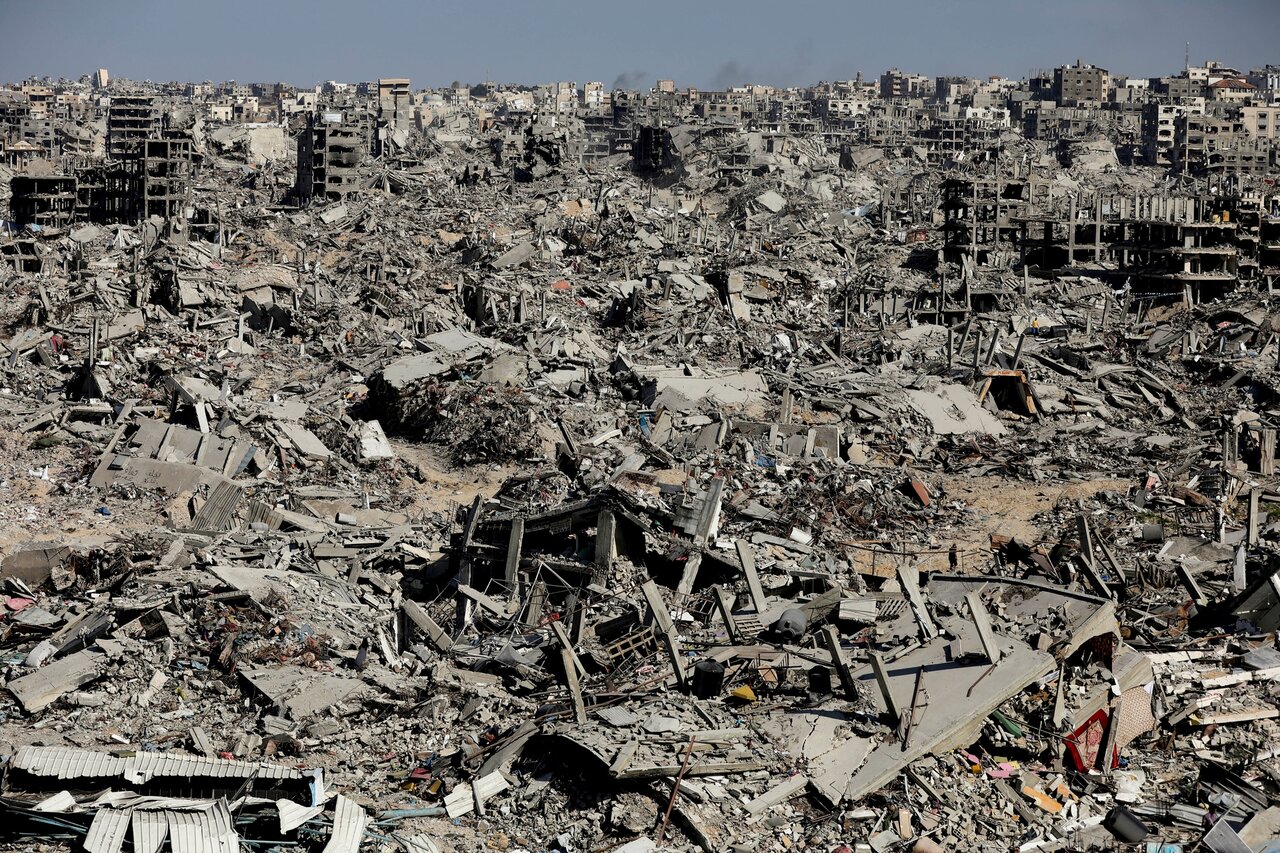Rubble’s grim ledger: Two years of devastation and reckoning in Gaza

THERAN – On October 7, 2023, Hamas and allied Palestinian groups launched an unprecedented multi-directional operation — known as the Al-Aqsa Storm — breaching the Gaza–Israel boundary, killing roughly 1,200 people in Israel, and carrying about 251 captives into Gaza.
The operation struck towns, military outposts, and the Nova music festival, plunging southern Israel into chaos and prompting an immediate, expansive Israeli military aggression.
Investigative reporting and UN fact-finding later documented that the Israeli military repeatedly invoked emergency protocols such as the Hannibal Directive, unleashing indiscriminate fire from helicopters and tanks even at the risk of killing its own citizens.
These measures may account for a significant share of Israeli deaths on October 7—while setting the tone for an aggressive campaign that international investigators now condemn as indiscriminate, disproportionate, and genocidal.
What followed was not a single campaign but a protracted strategy: sustained air and ground operations, repeated sieges, and temporary pauses for captive exchanges and faltering diplomacy.
Human toll and the collapse of services
Measured in concrete terms, the scale of human loss in Gaza is catastrophic. Gaza’s Ministry of Health figures place fatalities above 67,000 and injuries near 170,000 since October 2023; UNICEF and other child-protection agencies confirm tens of thousands of children are among the dead and injured and that malnutrition and pediatric trauma are rampant.
Mass displacement has been nearly universal: UNRWA and OCHA assessments indicate that the overwhelming majority of Gaza’s roughly 2.1–2.3 million residents have been displaced at least once, and shelter-damage assessments show destruction or severe damage to well over half of the Strip’s housing stock.
The health system has been battered: hundreds of attacks on health facilities and health workers have been documented, leaving many hospitals nonfunctional at times when they were most needed.
Famine, contested operations, and doctrine
Humanitarian metrics hardened into an official emergency in August 2025, when IPC analysis—endorsed by WHO, WFP, and FAO—confirmed famine (IPC Phase 5) in Gaza Governorate and projected catastrophic food insecurity for more than 640,000 people, with over a million more in emergency or crisis phases.
That formal classification reframes starvation from a risk into a documented, large-scale catastrophe and heightens obligations under international humanitarian law.
Individual operations have repeatedly illustrated the asymmetric bill exacted on civilians: the June 8, 2024, Nuseirat raid, which freed four captives, was followed by reports of extraordinarily high Palestinian fatalities — at least 274 killed, including dozens of women and children, according to Gaza health officials — intensifying debates about proportionality, rescue doctrine, and the acceptable risks of captive recovery.
Concurrently, senior Israeli officials made no secret of their intent to destroy Gaza’s civilian fabric. Former War Minister Yoav Gallant branded Palestinians ‘human animals,’ Finance Minister Bezalel Smotrich called starving two million people ‘justified and moral,’ and Heritage Minister Amichai Eliyahu even suggested using a nuclear strike.
UN investigators and human rights groups have cited such statements as evidence that Israel’s campaign was aimed at the collective punishment and dismantling of Palestinian society.
Law, rhetoric, and accountability
Legal institutions have registered these facts in unprecedented ways. The International Court of Justice in January 2024 ordered provisional measures in South Africa’s genocide application, including steps to prevent genocidal acts and ensure humanitarian access.
The International Criminal Court issued arrest warrants in November 2024 for Prime Minister Benjamin Netanyahu and War Minister Yoav Gallant, charging them with war crimes and crimes against humanity.
In September 2025, an independent UN Commission of Inquiry reported that there are reasonable grounds to conclude that conduct in Gaza meets the legal thresholds for genocide, citing both the scale of physical destruction and public statements by political and military leaders as evidence to be weighed by international fora.
What this anniversary demands
Two years of exacting registers—death lists, injury counts, displacement surveys, and an IPC famine classification—have converted grief into legal obligation; the IPC’s August 2025 finding of famine in Gaza Governorate crystallizes starvation as a documented crime.
The International Court of Justice has ordered provisional measures requiring Israel to prevent genocidal acts and allow humanitarian access, and the International Criminal Court secured arrest warrants for senior Israeli officials—judicial steps that reflect the crisis’s scale.
The U.S.–Israel peace proposal unveiled this autumn focuses on a ceasefire, staged withdrawals, captive exchanges, and demilitarization, but omits binding forensic investigations, enforceable reconstruction oversight, unconditional fuel, water, and food corridors, conditioning of arms and tech transfers, and corporate accountability. Without those elements, a pause risks becoming impunity.
Leave a Comment